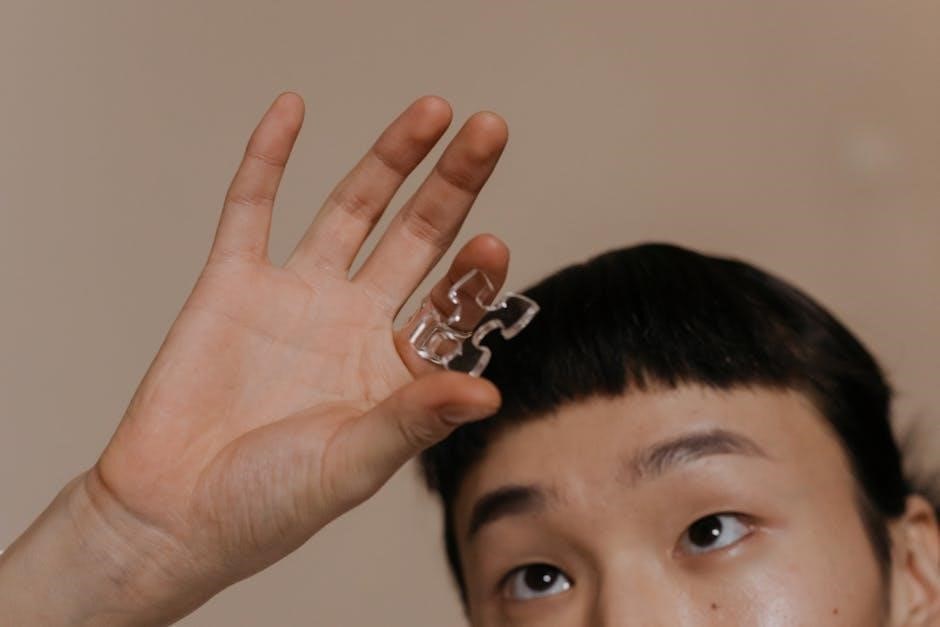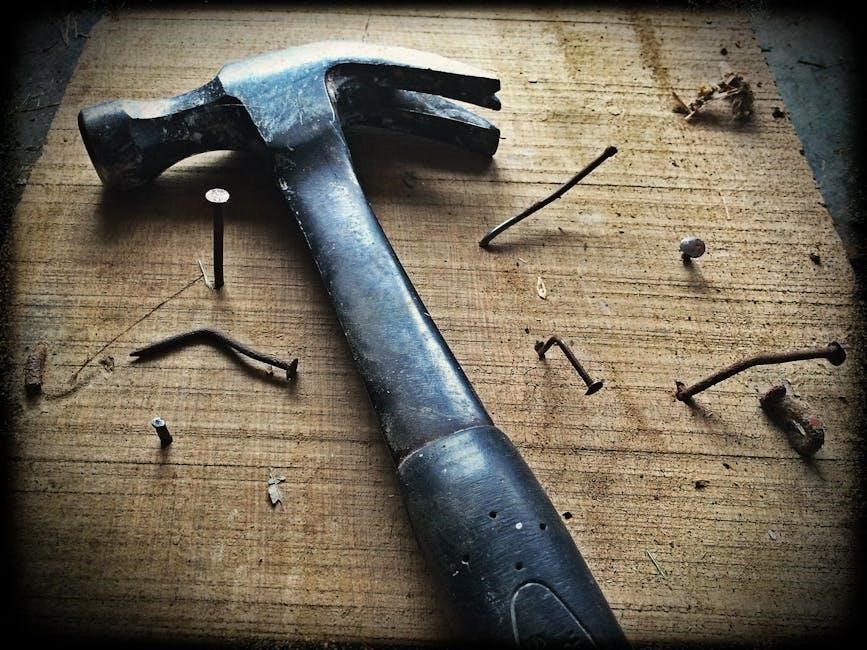ankle fracture exercises pdf
Ankle Fracture Exercises⁚ A Comprehensive Guide
This guide provides a structured approach to ankle fracture rehabilitation, encompassing various exercise phases. It details exercises for range of motion, strengthening, and balance, crucial for recovery. Remember to consult your doctor or physical therapist before starting any exercises.
Understanding Ankle Fracture Rehabilitation
Ankle fracture rehabilitation is a crucial process for regaining full function after injury. The recovery journey involves several phases, each with specific goals and exercises. Initially, the focus is on pain management and reducing swelling. This might involve using crutches, elevation, and ice; As healing progresses, the emphasis shifts to restoring range of motion (ROM) in the ankle joint, improving flexibility, and regaining strength in the surrounding muscles. This is achieved through a carefully designed program of progressive exercises. A key aspect is regaining proprioception, or the sense of joint position and movement. This helps restore balance and coordination, essential for safe ambulation and return to daily activities. The duration of rehabilitation varies depending on the severity of the fracture, the individual’s healing rate, and adherence to the prescribed program. Regular follow-up appointments with a physical therapist are essential to monitor progress, adjust the exercise plan, and address any complications.
Early Stages⁚ Non-Weight Bearing Exercises
The initial phase of ankle fracture rehabilitation focuses on non-weight-bearing exercises. These are performed while the ankle is immobilized, often in a cast or boot, to prevent stress on the healing bone. The primary goals are to maintain range of motion (ROM) and prevent muscle atrophy. Simple exercises include ankle pumps (pointing and flexing the foot), alphabet tracing with the toes, and gentle rotations of the ankle joint. These exercises should be performed regularly, several times a day, for short durations to avoid pain or discomfort. It is crucial to avoid any forceful movements or weight-bearing activities during this stage. The frequency and intensity of the exercises will be guided by your physical therapist and doctor, ensuring the healing process remains undisturbed. Pain management strategies may be needed to ensure comfort during these exercises. As healing progresses, the therapist may gradually introduce more challenging exercises, preparing the ankle for the next phase of weight-bearing activities.
Phase 1 Exercises⁚ Range of Motion and Flexibility
Once the initial healing phase is complete and the cast or boot is removed, Phase 1 rehabilitation begins, focusing on restoring range of motion (ROM) and flexibility to the ankle joint. This phase typically involves gentle, controlled movements to improve dorsiflexion (bending the foot upwards), plantarflexion (pointing the foot downwards), inversion (turning the sole inwards), and eversion (turning the sole outwards). Exercises may include towel slides, using a towel to pull the foot towards the body for dorsiflexion and away for plantarflexion. Passive range of motion (PROM) exercises, where a therapist moves the ankle, might also be incorporated, especially in the initial stages. The goal is to regain full, pain-free movement without forcing the joint; Maintaining a comfortable pace is crucial to prevent re-injury or setbacks. Regular stretching, such as holding the foot in dorsiflexion and plantarflexion for a few seconds, is also beneficial. The progression through these exercises is gradual, guided by the patient’s comfort levels and the therapist’s assessment. Regular monitoring for pain or swelling is vital, and adjustments to the exercise regime will be made as needed.
Phase 2 Exercises⁚ Weight Bearing and Strengthening
As the ankle gains strength and stability, Phase 2 introduces weight-bearing exercises. This phase focuses on gradually increasing the load on the injured ankle, starting with partial weight-bearing (PWB) and progressing to full weight-bearing (FWB) as tolerated. Simple activities like standing on the injured leg for short periods, progressing to walking with assistive devices like crutches or a cane, are incorporated. Strengthening exercises are then introduced, targeting the muscles surrounding the ankle. These might include calf raises (plantarflexion) to strengthen the plantar flexors, and exercises using resistance bands to improve dorsiflexion strength. Isometric exercises, where the muscle is contracted without movement, are also useful for building strength without stressing the joint excessively. The progression from PWB to FWB depends heavily on individual healing progress and pain tolerance. It’s crucial to listen to your body and avoid pushing through pain. Regular check-ins with the physical therapist are essential to monitor progress and modify the exercise program as needed. The goal is to build sufficient strength and stability to resume normal activities without pain or risk of re-injury.
Advanced Exercises⁚ Proprioception and Balance
Once sufficient strength and range of motion are achieved, the focus shifts to proprioception and balance. Proprioception refers to the body’s awareness of its position in space. After an ankle fracture, this sense can be impaired, increasing the risk of falls and re-injury. Exercises to improve proprioception often involve standing on uneven surfaces, such as balance boards or foam pads, to challenge the ankle’s stability. Single-leg stance exercises, initially performed with support, are gradually progressed to unsupported stances, increasing the duration as balance improves. These exercises can be made more challenging by closing the eyes or performing them on a moving surface. Dynamic balance exercises, involving shifting weight and changing positions, are also incorporated. These might include walking heel-to-toe, side-to-side stepping, or performing squats on one leg. The goal is to improve the ankle’s ability to respond to unexpected movements and maintain balance in various situations. Regular practice is crucial to regain and maintain optimal proprioception and balance. This reduces the risk of future ankle injuries and ensures a safe return to normal activities.
Strengthening Key Muscle Groups
Strengthening the muscles surrounding the ankle joint is paramount for stability and preventing re-injury after a fracture. This involves focusing on several key muscle groups. The plantar flexors, located in the calf, are responsible for pointing the foot downwards. Exercises to strengthen these muscles include calf raises, both single and double-leg, and using resistance bands to increase the intensity. The dorsiflexors, located on the front of the shin, flex the foot upwards. Strengthening these muscles involves exercises like towel slides, where the toes pull a towel towards the body, and resisted dorsiflexion using resistance bands. Inversion and eversion exercises target the muscles that control the inward and outward movement of the foot. Resistance bands can be employed to add resistance to these movements, strengthening the muscles effectively. Isometric exercises, where the muscle contracts without movement, are also beneficial in the early stages of rehabilitation; These can be performed by pushing against a wall or using resistance bands to maintain tension, building strength without stressing the healing bone. A progressive approach is crucial, gradually increasing the resistance and repetitions as strength improves. Regular strengthening exercises are essential for long-term ankle stability and function.
Plantar Flexors and Dorsiflexors
The plantar flexors and dorsiflexors are crucial muscle groups for ankle function. Plantar flexors, located in the calf, point the foot downwards. Strengthening exercises include seated calf raises, where the heel is lifted off the floor, and standing calf raises, progressing to single-leg raises for increased challenge. Resistance bands can be incorporated to add intensity. Dorsiflexors, on the front of the shin, pull the toes upwards. Exercises focus on improving range of motion and strength. Towel slides, where the toes pull a towel towards the body, are a simple yet effective exercise. Resisted dorsiflexion, using resistance bands to oppose the upward movement of the foot, increases strength. Alphabet tracing with the toes is another engaging exercise, improving flexibility and strengthening the dorsiflexors. Isometric exercises, such as pushing against a wall with the foot, are useful in early rehabilitation, building strength without joint movement. Remember to start gently, gradually increasing repetitions and resistance as strength and tolerance improve. Consistency is key to regaining full ankle mobility and strength. Always listen to your body and stop if you experience pain.
Inversion and Eversion Exercises
Inversion and eversion exercises target the muscles responsible for tilting the foot inward (inversion) and outward (eversion). These movements are essential for ankle stability and balance. Strengthening these muscles is crucial for preventing future injuries. Begin with simple range-of-motion exercises. While seated, gently move your foot inward and outward, focusing on controlled movements. Progress to resisted exercises using resistance bands. Attach the band around your foot and a stable object, then perform controlled inversions and eversions against the resistance. For added challenge, try single-leg inversions and eversions while maintaining balance. This will improve proprioception—your body’s awareness of its position in space. Isometric exercises, such as resisting the inward and outward movement of your foot with your hands, are also beneficial. These exercises can be performed while seated or standing. Start with low repetitions and gradually increase as your strength improves. Remember to stop if you feel any pain. Incorporating these exercises into your regular routine will enhance ankle stability, improve balance, and reduce the risk of re-injury.
Returning to Daily Activities
The transition back to daily activities after an ankle fracture requires a gradual and careful approach. Begin by incorporating simple movements into your routine, such as walking short distances on level surfaces. Gradually increase the duration and intensity of your walks as tolerated. Avoid sudden movements or twisting your ankle. Pay close attention to your body and rest when needed. As your strength and balance improve, you can progress to more challenging activities like walking up and down stairs or inclines. Start slowly and use assistive devices like a cane or crutches if necessary. Remember, the goal is to regain full function without causing further injury. Incorporate activities that simulate daily tasks, such as picking up objects from the floor or walking on uneven terrain. This will help to improve your coordination and confidence. As you regain strength and balance, you can gradually return to your regular activities, such as sports or hobbies. However, it’s crucial to listen to your body and avoid overexertion. If you experience any pain or discomfort, reduce the activity level and consult your doctor or physical therapist. A phased return to normal activities will ensure a successful and safe recovery.
Preventing Future Injuries
Preventing future ankle injuries involves a multifaceted approach encompassing proactive measures and lifestyle adjustments. Maintaining a healthy weight reduces stress on your ankles and decreases the risk of fractures. Strengthening the muscles surrounding your ankle joint—including the plantar flexors, dorsiflexors, invertors, and evertors—provides crucial support and stability. Regular exercise, particularly those focusing on balance and proprioception (your body’s awareness of its position in space), are vital. Consider incorporating exercises like single-leg stances and balance board activities into your routine. Appropriate footwear is also essential; choose shoes that provide adequate support and cushioning, especially during activities that place stress on your ankles. Proper warm-up before exercising and cooling down afterwards are also crucial for injury prevention. Avoid activities that place excessive stress on your ankles, especially on uneven surfaces. Be mindful of your surroundings to prevent trips and falls. Regular stretching can maintain ankle flexibility and reduce the risk of injury. If you participate in high-impact activities, consider using protective gear such as ankle braces. Early detection and treatment of any ankle pain or instability is key to prevent further complications. By diligently following these preventative strategies, you significantly reduce the likelihood of future ankle injuries.
Maintaining Ankle Health Long-Term
Sustaining long-term ankle health requires a commitment to consistent care and preventative measures. Regular exercise remains crucial; incorporate activities that challenge balance and coordination, such as tai chi or yoga. These practices enhance proprioception, improving your body’s awareness of its position in space and reducing the risk of falls. Continue to strengthen the muscles surrounding your ankle joint. Regular stretching maintains flexibility, promoting optimal range of motion and reducing stiffness. Pay attention to your footwear; choose supportive shoes with good cushioning to absorb shock and protect your ankles. Maintain a healthy weight to lessen stress on your joints. Listen to your body; address any ankle pain or discomfort promptly. Regular check-ups with your doctor or physical therapist allow for early detection of potential problems. Consider using ankle braces during high-impact activities or when engaging in sports to provide extra support. Incorporate regular self-massage into your routine to promote blood circulation and reduce muscle tension. Stay hydrated to maintain joint lubrication and overall health. A balanced diet rich in calcium and vitamin D supports strong bones. By consistently following these guidelines, you can significantly reduce your risk of future ankle problems and maintain optimal ankle health throughout your life.











Leave a Comment